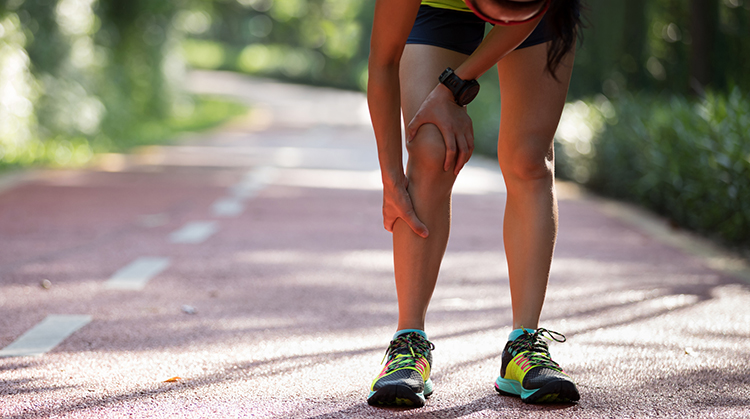
Shin splints, also known as medial tibial stress syndrome, describes pain in the front of your lower leg or along the inside of the lower leg, next to the shin bone (tibia). The condition occurs when too much stress is put on the tibia. It also can occur when the muscle next to the tibia is overworked. Shin splints most commonly happen after high-energy exercise or sports that involve running and jumping, and at the beginning of a new sports or training program.
Thankfully, shin splints can be treated effectively. They also are preventable when following a proper progression of exercise program when beginning or intensifying any new exercise or training.
You can contact a physical therapist directly for an evaluation and treatment that's specific to you. To find a physical therapist in your area, visit Find a PT.
In the meantime, here are some simple steps from physical therapists that you can try on your own:
1. Stretch your calves and hamstrings.
Tight leg muscles can put you at risk for shin splints.
2. Avoid sudden increases in physical activity.
Gradually increase activities such as running, jumping, and walking. This includes spreading out days between activities and cross-training or doing alternate forms of exercise as part of your routine.
3. Exercise on softer surfaces when possible.
Exercising on hard surfaces, such as concrete or sidewalks, increases the amount of force that your bones and muscles absorb. This causes muscle fatigue and overuse, and ultimately, shin splints.
You can reduce the amount of shock your muscles, bones, tendons, and joints have to absorb by choosing softer surfaces, such as:
- Sprung wood floors.
- Grass.
- Dirt and sand.
- Synthetic tracks and artificial turf fields.
4. Strengthen your foot and the arch of your foot.
The arch of your foot forms by the time you are 7 to 8 years old. Injury, age, and other health conditions can alter the structure of the arch. Lack of physical activity will create weakness in the muscles of the foot, lower leg, thigh, and trunk. These changes can affect your lower leg and lead to shin splints.
Strengthening your foot can be a good place to start. For example, using your toes to pull a towel on the floor closer to your foot while sitting can help strengthen the arch muscles. This may help the arch work more effectively to reduce or prevent shin splint pain. A physical therapist can teach you the best exercises for your feet.
Foot orthotics (such as arch supports) may help your foot work better. If your arch is low orthotics can provide arch support. Less frequently, high arches can be an issue, and foot orthotics can allow more shock absorption, which will decrease stress.
5. Strengthen your hip muscles.
Strengthening your hip muscles helps absorb more of the shock and pressure on the leg during exercise. See your physical therapist to learn the correct exercises for your needs.
6. Buy new athletic shoes that are right for you.
Ill-fitting shoes or shoes that lack proper features can contribute to shin splints. Speak with your physical therapist about the right shoe features for you. Depending on your activity, you may need to replace shoes often. Have several pairs of good athletic shoes, and regularly rotate the pair you use.
7. Stay at a healthy body weight.
Increased body weight, being overweight, or obesity can lead to a higher risk of shin splints.
8. Have your running and jumping technique analyzed and corrected by a physical therapist.
Incorrect running, jumping, and landing techniques can cause shin splints. Your physical therapist can help you understand how to improve your exercise technique to avoid shin splint pain. They also can check to see which muscles are tight or weak, and teach you how to stretch and strengthen them.
A physical therapist can observe how you move and run, determine how your body reacts, and then design a program of care to help you prevent shin splints, or recover if you are experiencing them. They also can design an exercise program that you can follow to safely progress your desired activity to reach your fitness or performance goals.
Physical therapists are movement experts. They improve quality of life through hands-on care, patient education, and prescribed movement. You do not need a doctor's referral to see a physical therapist.* To find a physical therapist in your area, visit Find a PT.
*Consumers have direct access to physical therapist services in the United States. Insurance policies, corporate policies, or state practice laws may still require a physician's referral before treatment by a physical therapist. Some states set limits on the type or duration of treatment without a referral.


